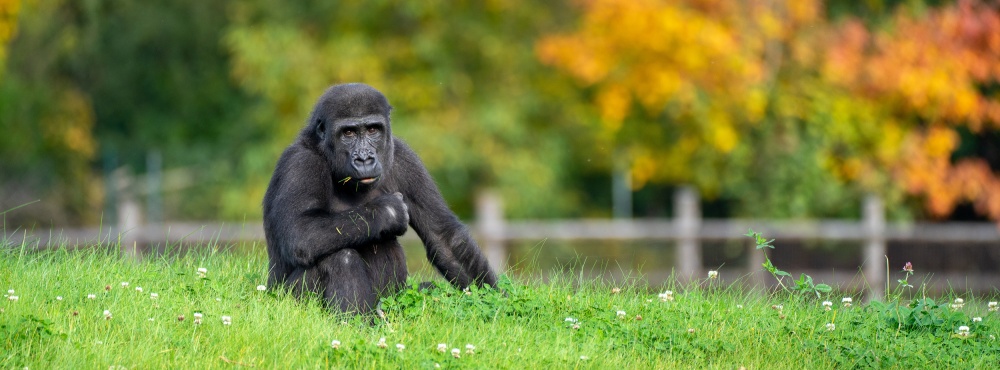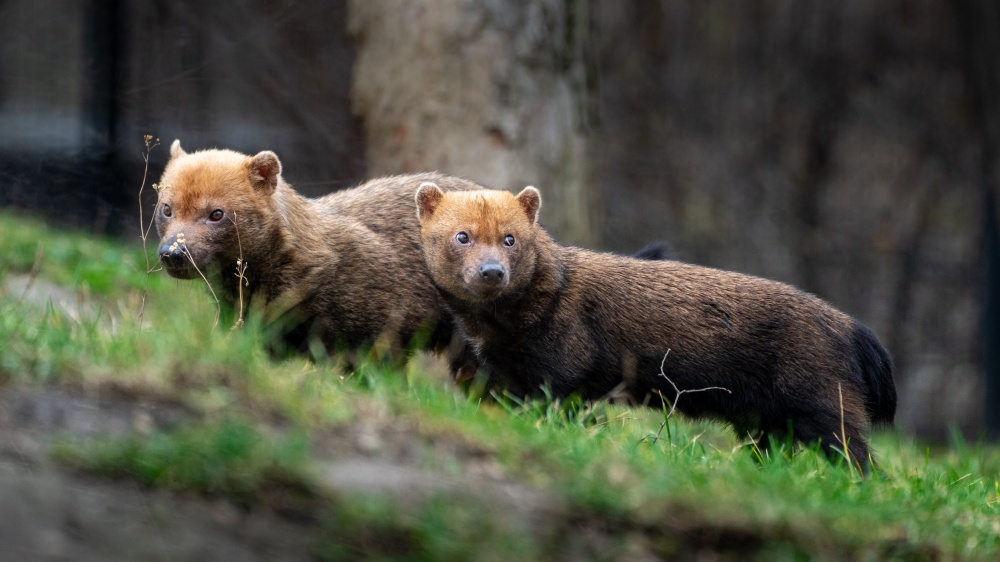Bush dog puppies frolic as visitors gaze on

Prague Zoo’s bush dogs had puppies. Visitors can now watch the puppy pair in the outdoor enclosure. After being here for five years, these South American carnivores managed to breed. This is the first litter of a newly set up pair of these difficult-to-breed wild dogs.
 The bush dog puppies have already passed their first critical period and Prague Zoo’s visitors can now observe them larking about in the enclosure close to the polar bear exhibit. Photo Oliver Le Que, Prague Zoo
The bush dog puppies have already passed their first critical period and Prague Zoo’s visitors can now observe them larking about in the enclosure close to the polar bear exhibit. Photo Oliver Le Que, Prague Zoo
“On the recommendation of the European Breeding Programme (EEP) coordinator, the new breeding female came from France last November and we are already enjoying the first puppies, which we consider to be a great success,” said Pavel Brandl, the mammal curator. He also pointed out the animals’ genetic value. The male’s father - the grandfather of this year's puppies - came to Prague from Japan, while the female’s mother comes from French Guiana.
The pair of puppies were born on April 8, and until now, their exhibit in the South American Carnivores area has been closed off. This is because bush dogs are very sensitive to any kind of disturbance when raising puppies. That is why they are rarely bred in zoos today.
“At the moment it’s best to see the puppies in the outdoor enclosure. We haven’t sexed them yet, but they’ll soon undergo a thorough veterinary examination. Nevertheless, they are starting to get their colouring with the beautiful lighter colour of the adults,” explained Denisa Zběhlíková, the head keeper of small mammals. In her opinion, they certainly don’t lack an appetite and just now they are switching from breast milk to meat-based food. “To catch them at their best, visitors should get here first thing in the morning after the zoo opens,” Zběhlíková advises. “They rest in one of the cool dens during the strong midday sun, which, after all, no one can blame them for.”
The bush dog is a medium-sized canid inhabiting Central and South America from Panama to Paraguay. Despite their size, a pack can take down a tapir, although their diet mostly consists of armadillos or agouti. The bush dog’s main threats are the expansion of farmland, fewer prey due to illegal hunting, and the increased risk of contracting deadly diseases from domestic dogs. This is why the species is classified as Near Threatened on the IUCN Red List.

The parents of this year's pups are a young couple, and this is their first litter. Right from the start the five years old male and two years old female formed a harmonious pair. Visitors can spot the male by his larger head and lighter coat. Photo Oliver Le Que, Prague Zoo
ZOOPRAHA.CZ
Contacts
- The Prague zoological garden
U Trojskeho zamku 120/3
171 00 Praha 7
Phone.: (+420) 296 112 230 (public relations department)
e-mail: zoopraha@zoopraha.cz
Others








